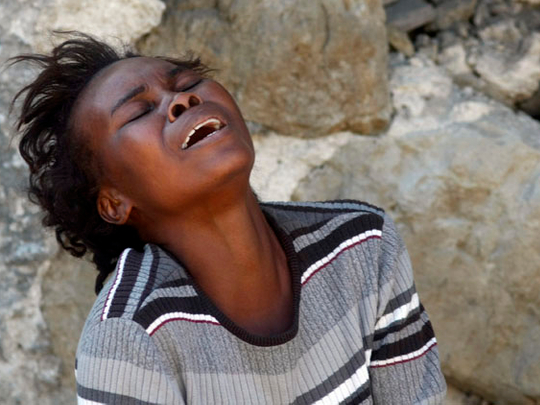
The heatwave, forest fires and drought in Russia and central Asia may be unprecedented in recent times. But there is something familiar about the ensuing food crisis, as the price of wheat remains 50 per cent higher than just six weeks ago.
It is just two years since the last such crisis. A spike in the price of agricultural commodities in 2007-08 caused panic from Italy to Haiti, drawing sharp attention to a deeper malfunctioning in the world's food markets.
This malfunctioning is creating disasters of an unfamiliar nature in the poorest countries. Niger, for example, a fragile west African nation, is experiencing its worst food crisis in years, but is not actually short of food. Mounds of cereals are piled high on market stalls — they are simply too expensive to afford.
Crisis of production
The obvious explanation for the high price of food in Niger is a crisis of production. Like the wheat-producing countries currently at the centre of world attention, a harvest was destroyed by extreme weather. But the rise in price has been accompanied by a rise in another phenomenon — speculation in commodity markets. Derivatives packaging products such as wheat and maize have created massive profits for speculators with no interest whatsoever in the underlying physical commodities.
The number of derivative contracts in commodities increased by more than 500 per cent between 2002 and 2008, a process that accelerated at the end of the last decade, when the collapsing US mortgage market and global recession were followed by a huge spike in food prices. There is clearly a causative link between these two phenomena. But clear battlelines have emerged in the argument over which way the arrow points.
Investors claim the market's profitability is based on existing supply-side fluctuations in the price of food. On some estimates, food production in the next three decades will need to rise by more than 70 per cent above current levels to cope with the demands of a larger, more urbanised and more affluent global population. Meanwhile, biofuels, erratic harvests and climate change have limited the potential for an increase in supply.
But others claim that the speculation itself has been a cause of volatility in the commodity market. The anti-poverty group World Development Movement, whose recent report singles out the investment bank Goldman Sachs as last year making more than $5 billion (Dh18.35 billion) in profits from commodity trading, describes the practice as "dangerous, immoral and indefensible". "Silent mass murder" is the phrase used by the former UN special rapporteur on the right to food, Jean Ziegler. The European single market commissioner, Michel Barnier, speaking at the European parliament earlier this year, described the fact that a billion people worldwide were suffering from food insecurity while others profited by speculating on agricultural raw materials as "scandalous".
The UN's human rights council advisory committee has recognised the effect of price volatility in poor countries and recommended a series of measures, including re-establishing international buffer stocks to stabilise prices, greater controls over agricultural subsidies for developed states, limits on the use of bioenergy technologies that use staple foods, and further scrutiny of international trade agreements.
Campaigners demands are not without precedent. The Wall Street reform legislation recently enacted in the US demands greater regulation in derivatives trading, and will increase the transparency of commodity speculation.
Soaring prices
The obscurity of the UK market is hard to deny; Liffe — the London futures exchange — has promised to publish a breakdown of investors in the commodities market, not least after the controversy surrounding Anthony Ward and his firm Armajaro, which last month cornered the cocoa market, buying up seven per cent of all annual world production. Cocoa prices responded with a 0.7 per cent rise and are now at their highest level since 1977.
In Ghana there remain endemic levels of poverty in cocoa-farming communities. The injustice of the commodities market is that while a fall in price can topple an economy, as it did for a number of countries in post-independence west Africa, a rise benefits those outside the zone of production — an army of speculators and investors based in London and New York.
Either way, small-scale developing-world producers lose. And when high food prices combine with crop failures, forcing poor farmers to buy staples for their own consumption at market prices, then the issues become concentrated around one stark reality. Hunger.







